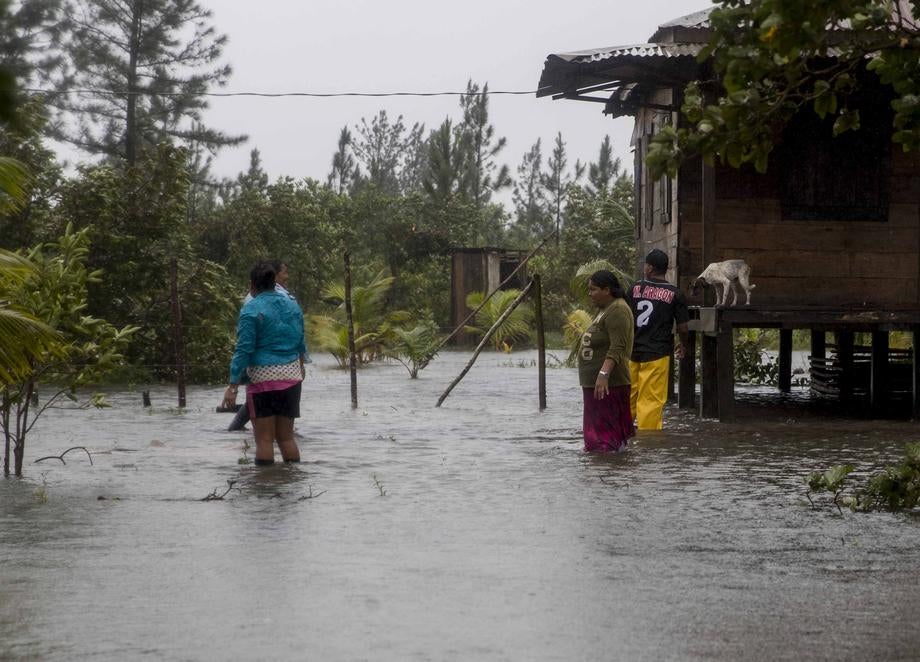Atlantic hurricane season in 2020 breaks new record as Storm Theta looms
Theta’s arrival means 2020 has now broken record for number of named storms in one season

Your support helps us to tell the story
From reproductive rights to climate change to Big Tech, The Independent is on the ground when the story is developing. Whether it's investigating the financials of Elon Musk's pro-Trump PAC or producing our latest documentary, 'The A Word', which shines a light on the American women fighting for reproductive rights, we know how important it is to parse out the facts from the messaging.
At such a critical moment in US history, we need reporters on the ground. Your donation allows us to keep sending journalists to speak to both sides of the story.
The Independent is trusted by Americans across the entire political spectrum. And unlike many other quality news outlets, we choose not to lock Americans out of our reporting and analysis with paywalls. We believe quality journalism should be available to everyone, paid for by those who can afford it.
Your support makes all the difference.The turbulent Atlantic hurricane season passed a grim new milestone as Subtropical Storm Theta formed on Monday night.
The arrival of Theta means that 2020 has now broken the record for the number of storms strong enough to be given names in a single season.
Theta is the 29th named storm of the hurricane season, and meteorologists say another could strike the Caribbean in the coming days.
So far, a dozen storms have made landfall in the US this year. Storms have also caused severe damage across Central American and Caribbean countries including Belize, Bermuda, Guatemala, Honduras, Mexico, Nicaragua and Panama.
This year’s record hurricane season has likely been influenced by the climate crisis, as well as natural meteorological events, scientists say.
The strongest storms to hit the Americas this year include Hurricane Eta, a category 4 storm that killed more than 100 people as it made landfall in Central America, and Hurricane Laura, which killed 77 people and caused $14 billion in damage after making landfall in Louisiana.
Cyclones in the Atlantic are given a name if their wind speeds exceed 39 miles per hour (mph), at which point they become known as “tropical storms”. If their wind speeds exceed 74 mph, they are then given the name “hurricane”.
Subtropical Storm Theta was producing maximum wind speeds of around 50 mph in the northeast Atlantic on Monday night, according to the US National Hurricane Center.
The number of named storms in the Atlantic this year has exceeded forecasts made by the Center and other US scientists, says Prof Michael Mann, director of the Earth System Science Center at Pennsylvania State University.
“Our statistical pre-season forecast predicted as many as 24 named storms, the most bullish of all of the pre-season forecasts, but not bullish enough. The actual total has already exceeded that number," he said.
“As we continue to warm the planet and the tropical Atlantic, there is more energy to fuel more and stronger tropical storms and hurricanes. When we happen to get a La Niña event, as with this year, it reinforces the impact that climate change is having and we get the sorts of devastating storm seasons that we are witnessing.”
La Niña is a natural periodic weather event affecting sea temperatures in the Pacific and Atlantic Oceans.
During La Niña, westerly winds high in the atmosphere weaken, creating conditions that can allow more hurricanes to develop in the Atlantic.
The climate crisis is also playing a role in driving up hurricane risk, scientists have reasoned. This is because tropical cyclones use warm, moist air as fuel and, as oceans heat up, more of this fuel is becoming available.
“In 2020 in the Atlantic the number has been exceptional,” said Dr Kevin Trenberth, distinguished senior scientist at the National Center for Atmospheric Research.
“All hurricanes take heat out of the ocean in the form of evaporative cooling, that provides the fuel for the storm via latent heating, and very big, intense storms leave a pronounced cold wake behind them, to the detriment of subsequent storms.”
Research has shown that, globally, major tropical cyclones – known as “typhoons” in the northwest Pacific Ocean and “hurricanes” in the North Atlantic – have become 15 per cent more likely over the past four decades.
A second study published in the Science journal found that North America’s 2017 hurricane season was primarily driven by unusually warm conditions in the Atlantic Ocean. This warmth was likely connected to human-caused heating, the study found.
It added that hurricanes on a similar scale to those of 2017 could become 1.5 to two times more frequent by 2080, depending on how much action is taken to tackle climate change.
The study’s lead author Dr Hiroyuki Murakami, project scientist at the University Corporation for Atmospheric Research and the National Oceanic and Atmospheric Administration (NOAA) said: “I speculate that the active 2020 hurricane season was a combination of the long-term climate change and internal variability.”
Further research published this year found that meeting the Paris Agreement’s most optimistic target of limiting global warming to 1.5C above pre-industrial levels could halve the risk of severe hurricanes for the Caribbean, when compared to a world where warming reaches 2C.

Join our commenting forum
Join thought-provoking conversations, follow other Independent readers and see their replies
Comments